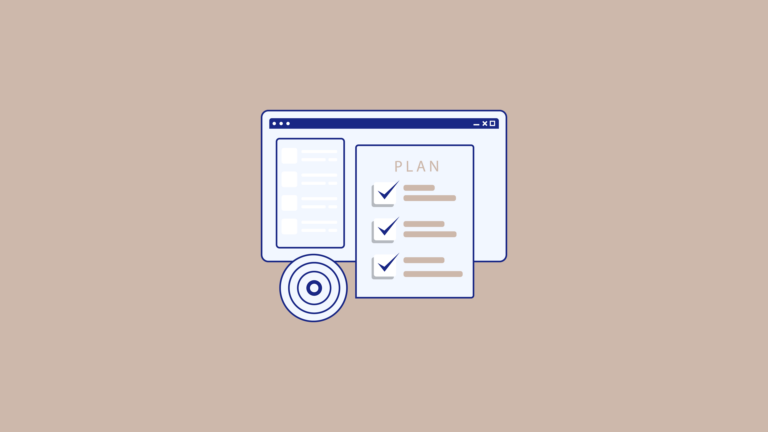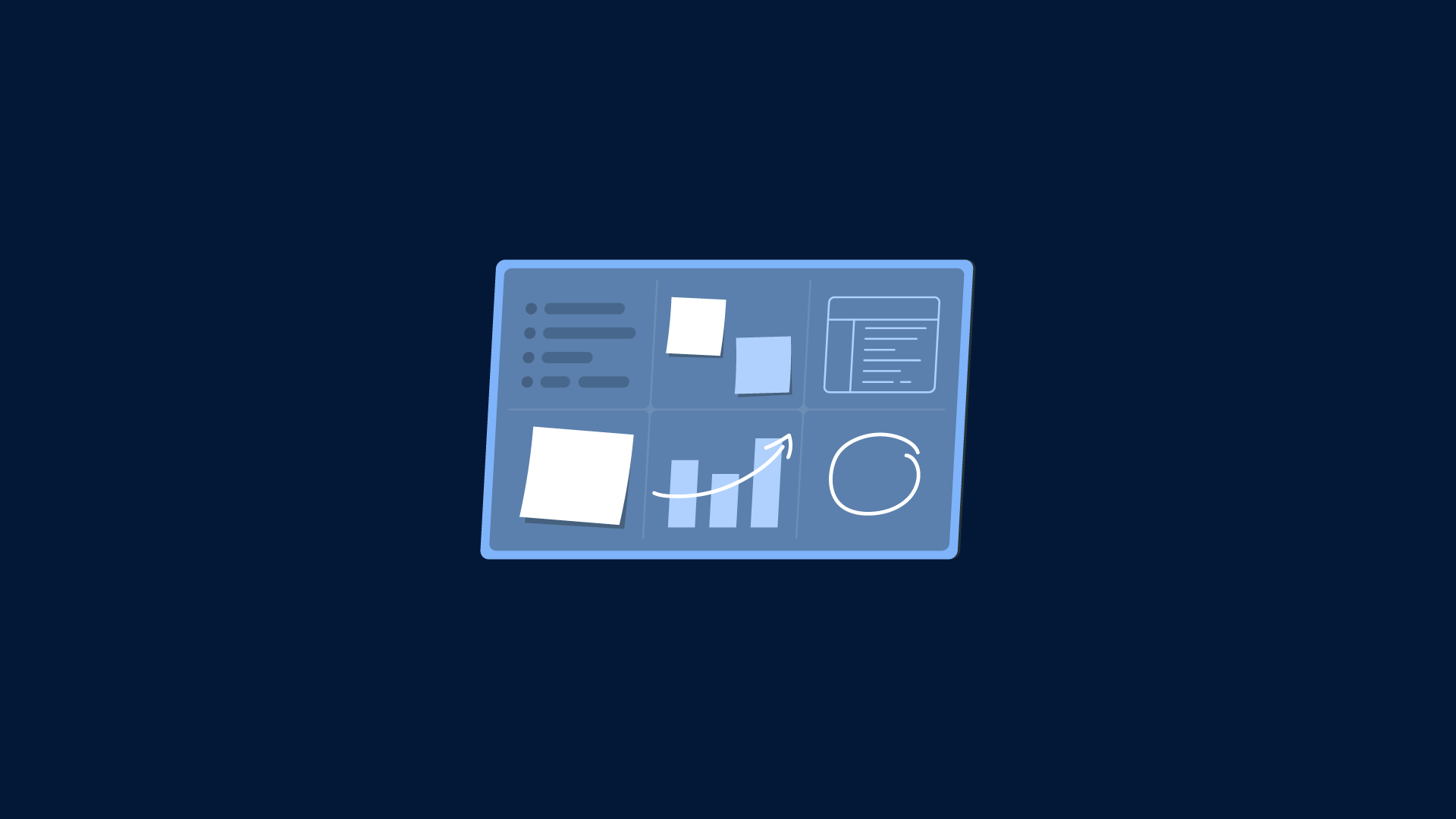|
Getting your Trinity Audio player ready...
|
A project plan is a document that outlines all of the elements needed to successfully complete a project and can help set realistic expectations for stakeholders.
It includes goals, tasks, activities, milestones, resources required, timelines and deadlines. A good project plan isn't just handed over; it's created with careful consideration of all elements involved.
Whether you’re tackling a personal project or leading a team at work, having a solid plan in place can make all the difference. However, many people struggle with creating an effective project plan that truly works.
In order to create a project plan that works, you need to start with a clear understanding of your goals, timelines, resources, and potential roadblocks. By following a few key steps and avoiding common pitfalls, you can create a project plan that sets you up for success.
In this article, we’ll explore the key elements of a successful project plan and provide tips for creating a plan that works for you.
Project Plan
A project plan is a series of formal documents that define the stages of a project and help ensure its successful completion.
What Is a Project Plan?
A project plan is a series of formal documents that define the stages of a project and help ensure its successful completion.
The plan outlines the resources, tasks, schedules and deliverables necessary to complete the project while accounting for any potential risks along the way. These documents are put together at the project planning phase after putting together a project charter according to the Method 123 project management approach.
Project planning software can be used to create more robust plans with Gantt charts that map out task dependencies, labor costs, resource hours and more. With this software, managers can execute their plans in one of five different views and track progress as they go with dashboards.
What is project planning?
Project planning is an essential process in project management and it involves the definition of the project scope, objectives, and steps needed to complete the work.
The purpose of this process is to create a plan that can be followed by all members of the team involved. It is important for project planners to take into consideration both customer needs and project requirements when coming up with a plan. This ensures that the project can be completed on time and within budget.
The output of the project planning process is a project management plan which outlines clearly what each member needs to do, how long it will take them, and any special requirements or conditions that should be addressed during implementation. In addition, this plan also serves as a roadmap for progress tracking, as well as communication between team members and stakeholders.
Moreover, it takes past experiences into account in order to learn from any mistakes made during earlier phases of the project and improve future results. By implementing effective planning strategies during this phase, organisations are able to guarantee successful outcomes for their projects.
What is a project management plan?
The project management plan is an essential document for any project. It lays out the overall process by which the project will be managed and how it will reach its objectives within the given scope.
This plan outlines key elements such as deadlines, assignments, resources, and milestones so that everyone involved can properly map out their journey to success. A well-organized and comprehensive project plan serves as a blueprint for completing a task on schedule and within budget.
For efficient tracking, a popular visual representation of the project plan is the Gantt chart. This chart visually portrays the entire schedule along with each task’s corresponding start date, end date, duration and progress updates at various intervals until completion.
The idea behind this kind of chart is to guarantee that all tasks are completed by their respective deadlines to ensure the successful execution of any project. The Gantt chart gives stakeholders an organized view of the project timeline while also allowing them to easily identify issues or problems if they arise.
How to write a good project plan
If you're looking to create a project plan that works, there are a few key steps you should follow. By following these steps, you can ensure that your project stays on track and meets its goals.
Here's what you need to do:
1. Define Your Project Goals and Objectives
Defining your project goals and objectives is critical to ensuring project success. Your goals should be specific, measurable, attainable, relevant, and time-bound (SMART). This means that each goal should be clearly defined and include specific metrics for success.
For example, a SMART goal for a software development project might be to deliver a product with a 95% bug-free rate by the end of the year. This goal is specific, measurable, and time-bound.
As a project manager, it's important to ensure that your goals align with your overall business strategy and that they are communicated clearly to all stakeholders. This includes the project team, project sponsors, and other key stakeholders.
By clearly defining your goals and objectives, you can ensure that everyone in the project team is on the same page and working towards the same goals.
2. Identify Your Project Deliverables
Once you've defined your project goals and objectives, the next step is to identify your project deliverables. These are the tangible outcomes that your project will produce, such as products, services, or reports. Each deliverable should be clearly defined, and you should have a plan for how to achieve them.
For example, if your goal is to develop a new software product, your deliverables might include a functional specification document, a software prototype, and a final product release. By identifying your deliverables early in the planning process, you can ensure that everyone is working towards the same goals.
If you are working on a construction project , your deliverables could include a construction site plan, a schedule of works, safety documentation, and final building inspection.
3. Create a Work Breakdown Structure (WBS)
A work breakdown structure (WBS) is a hierarchical representation of your project scope. It breaks down your deliverables into smaller, more manageable tasks, which helps you identify the tasks required to complete each deliverable and provides a framework for tracking progress for the entire project.
For instance, if your deliverable is a software prototype, your WBS might include tasks such as requirements gathering, design, coding, testing, and debugging. When you break down your project into smaller tasks, you can ensure that each task is clearly defined, and that everyone knows what they need to do to complete each task.
4. Determine Your Resource Requirements
Determining your resource requirements is critical to ensuring project success. This includes identifying the personnel, equipment, materials, and other resources you'll need to complete your project. It's important to identify your resource requirements early in the planning process to ensure that they're available when you need them.
For example, if your project requires specialized equipment, you'll need to ensure that the equipment is available and that you have the necessary expertise to use it. Similarly, if your project requires specialized skills, you'll need to ensure that you have the necessary personnel to complete each task.
5. Develop a Project Schedule
Developing a project schedule is critical to ensuring that your project stays on track. Your schedule should include a timeline that outlines the start and end dates of each task and deliverable. It's important to take into account any dependencies between tasks, and to ensure that your schedule is realistic.
For example, if your project requires that certain tasks be completed before others can begin, you'll need to ensure that those dependencies are reflected in your schedule. Similarly, if your project requires that team members work on multiple tasks simultaneously, you'll need to ensure that your schedule reflects that.
6. Estimate your costs of the project
Estimating project costs is critical to ensuring that you stay within budget. You'll need to consider all resource requirements, including personnel, equipment, and materials, as well as any unforeseen costs that may arise during the project.
For example, if your project requires specialized equipment, you'll need to consider the cost of purchasing or renting that equipment. Similarly, if your project requires specialized skills, you'll need to consider the cost of hiring personnel with those skills or providing training to existing personnel.
It's important to have a detailed cost estimate that includes all necessary resources to complete your project. This will help you stay within budget and avoid any surprises down the line.
Make sure to estimate costs for delays to delivery of work so that incase you may need an extra budget you can be ready for it.
7. Identify risks and create a risk management plan
You'll need to identify any potential risks that could impact your project, and develop a plan to mitigate those risks.
For example, if your project requires specialized equipment, a risk might be that the equipment is not available when you need it. To mitigate that risk, you might develop a contingency plan that includes identifying alternative equipment that could be used if necessary.
It's important to regularly review and update your risk management plan throughout the project to ensure that you're prepared for any potential risks that may arise.
8. Communicate and Collaborate
Effective communication and collaboration are critical to project success. You'll need to ensure that all stakeholders are informed and involved in the project planning process, and that everyone is working towards the same goals.
Regular communication with stakeholders can help ensure that everyone is aware of project progress and any potential issues that may arise. Collaboration between team members can help ensure that tasks are completed efficiently and that everyone is working towards the same goals.
By prioritizing communication and collaboration throughout the project, you can ensure that everyone is working together towards a successful project outcome. This will result in your team completing each individual task with the project budget and timeline.
Add a RACI matrix to determine who will be responsible, accountable, consulted or informed about different tasks.
9. Monitor and control your project
Monitoring and controlling your project is critical to ensuring that you stay on track and within budget. You'll need to regularly monitor progress and make any necessary adjustments to ensure that your project stays on schedule and within budget.
For example, if you notice that a task is taking longer than expected, you may need to adjust your schedule to account for the delay. Similarly, if you notice that costs are exceeding your estimate, you may need to identify ways to cut costs or secure additional funding.
By regularly monitoring and controlling your project, you can ensure that any issues are addressed in a timely manner through the project lifecycle and that your project stays on track towards a successful outcome.
Tips For Writing Effective Project Plans
Creating an effective project plan is critical to the success of any given project. Taking extra care to ensure that your plans are comprehensive and well laid out is key in order to avoid potential problems down the line.
When writing project plans, it is important to be as detailed as possible. Making sure all expected activities, timelines, goals, and other pertinent details are included gives those involved with the project a clear roadmap for success.
By including all necessary details related to materials needed, outside help required and establishing measurable objectives, team members know their roles and have a better idea of how their progress will contribute to the overall goal.
Additionally, it can be beneficial to include language highlighting the importance of proactive communication so that everyone anticipates potential roadblocks before they become major issues.
It's also helpful when writing project plans—especially larger ones—to break tasks down into actionable steps by assigning responsibility for each task that needs completed. When tasks are broken down into chunks like this, teams can stay organized so that no one element gets overlooked or forgotten about during execution.
Keeping track of progress along with any schedule changes should also be part of the written plan in order for it to serve its purpose most effectively. In addition, setting reasonable due dates with contingencies in place in case of delays helps teams stay on track and prevents costly mistakes.
Make sure to use a project management tool to keep up with the progress of your project.
What Is Project Planning Software?
Project planning software is an effective way to organize a project’s tasks, resources, and costs. It allows project managers to maintain and automate the components required for a successful project such as timeline development, team management, cost estimation, resource allocation, risk monitoring, and more.
In addition, these tools offer user-friendly dashboards that provide a comprehensive summary of project advancement, as well as reports that can be utilized for stakeholder communication.
Using this kind of software saves time on projects by organizing tasks that are needed to be completed in one platform. As each step is completed it can be marked off and seen immediately on the dashboard what has been achieved during a given period.
Project planners have access to their projects 24/7 so they can easily check in on its progress whenever necessary. Additionally, this kind of software provides reminders when deadlines are approaching or tasks need to be completed soon so nothing slips through the cracks.
Benefits of Online Project Planning Software
Project planning software can be a great asset to businesses and teams looking to streamline their project management process. With the rise of digital tools, projects can now be managed with greater agility and efficiency.
This is because online project planning software makes it easy for managers to organize, prioritize and assign tasks. Managers can also make use of tools like Gantt charts, timelines, resource allocation and task statuses for accurate tracking and forecasting of all current projects.
The time-saving benefits offered by project planning software are invaluable. It automates redundantly repeated tasks, such as logging hours and keeping cost updates so that you don't have to waste time shuffling through countless documents whenever you need this information.
Additionally, project planning software allows team members to provide real-time updates on their progress, thus saving further time by preventing any communication bottlenecks between members or departments.
All of these features give managers the peace of mind that comes with using reliable technology that helps ensure their projects stay perfectly on track and within budget at all times.
Follow These Steps For Project Plan Success
Creating a project plan that works requires careful planning and attention to detail. By following these nine steps, you can ensure that your project stays on track and within budget, and that everyone involved is working towards the same goals.
Starting with defining your project objectives and scope, and ending with monitoring and controlling your project, each step plays a vital role in the success of your project. Remember to regularly review and update your plan as necessary to ensure project success. With a well-defined project plan, you can confidently move forward with your project, knowing that you have a roadmap for success.
Remember to regularly review and update your plan as necessary to ensure project success.







